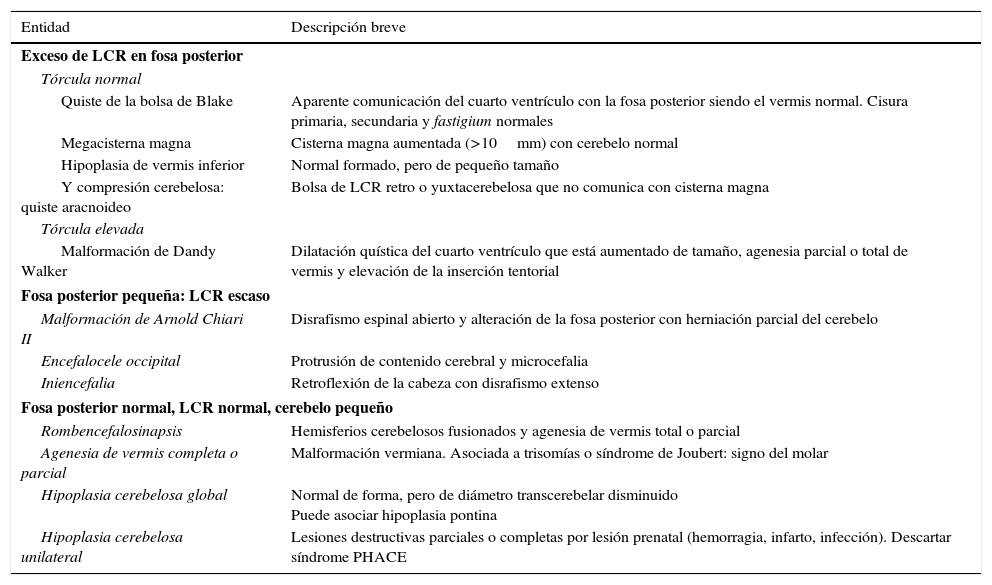La valoración del cerebelo fetal debe realizarse siempre por protocolo en las ecografías realizadas durante la gestación. Diferentes motivos como limitaciones técnicas o hallazgos ecográficos poco concluyentes han convertido la sospecha de patología del cerebelo fetal en una de las indicaciones más frecuentes de resonancia magnética (RM) prenatal. Aunque la ecografía fetal es la técnica de imagen de elección para su valoración, la RM muestra con mayor detalle la anatomía de la fosa posterior y las anomalías del desarrollo del cerebelo fetal, lo que permite un diagnóstico prenatal más preciso. Describimos la anatomía normal del cerebelo fetal mediante RM, así como las diferentes patologías que afectan a su normal desarrollo, y revisamos la terminología más apropiada para definirla, su diagnóstico diferencial y el papel de la RM en la evaluación prenatal de la fosa posterior.
Obstetric protocols dictate that the fetal cerebellum should always be assessed during sonograms during pregnancy. For various reasons, including technical limitations or inconclusive sonographic findings, suspicion of cerebellar abnormalities is one of the most common indications for prenatal magnetic resonance imaging (MRI). Although sonography is the imaging technique of choice to assess the cerebellum, MRI shows the anatomy of the posterior fossa and abnormalities in the development of the fetal cerebellum in greater detail and thus enables a more accurate prenatal diagnosis. We describe and illustrate the normal anatomy of the fetal cerebellum on MRI as well as the different diseases that can affect its development. Moreover, we review the most appropriate terminology to define developmental abnormalities, their differential diagnoses, and the role of MRI in the prenatal evaluation of the posterior fossa.






















